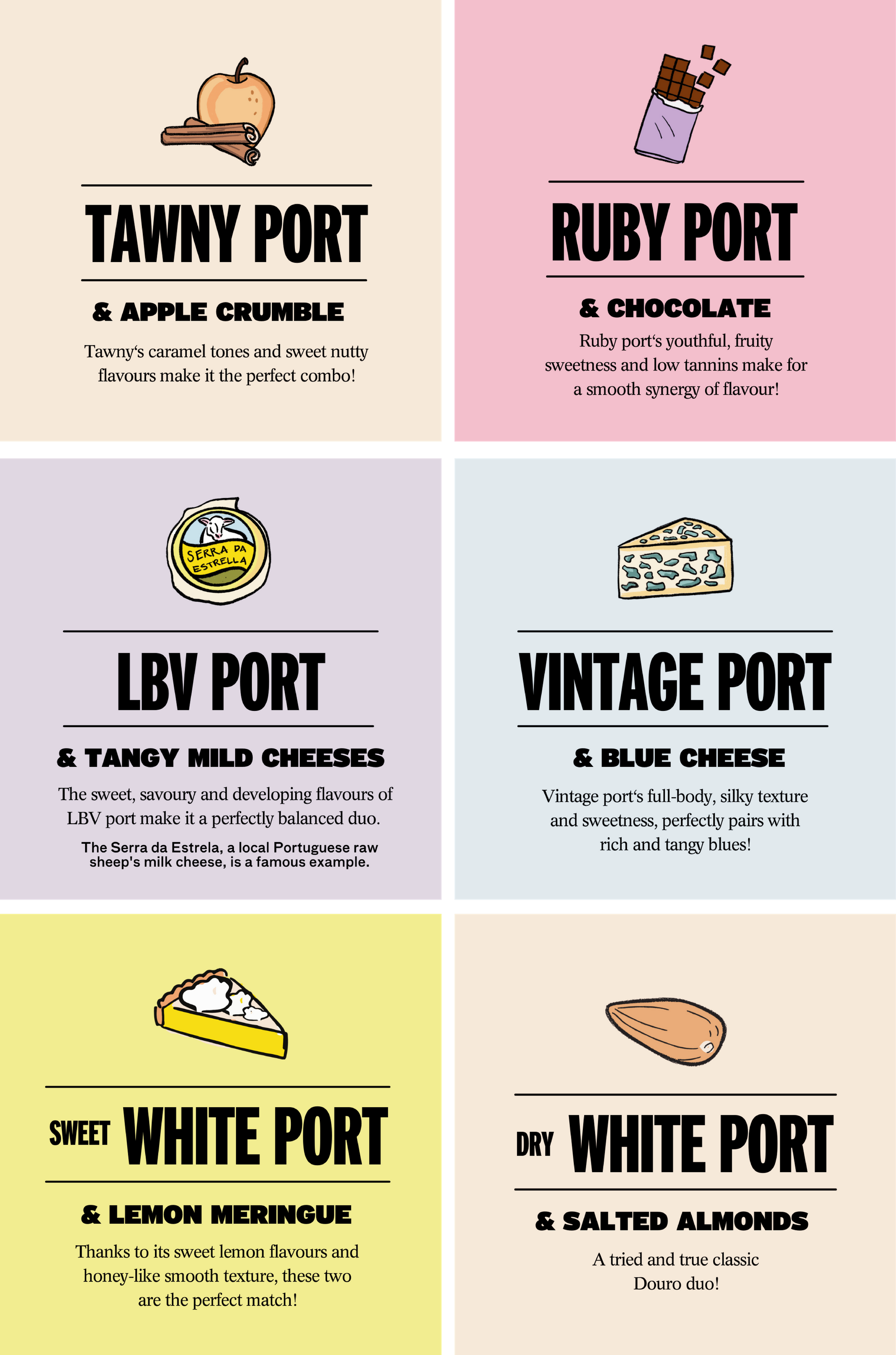

We all love a glass of it in winter, but how is it made?

Port!--red
The drink your grandpa would have after dinner! That one dusty bottle always sitting on your parents shelf! But what is it?
Port should only come from Portugal. Australia has certainly produced its fair share of it over the years, but these days they are banned from labelling the bottles as such.
In the same way that Champagne can only come from a small region in northern France, Port can only be grown and made in the Douro Valley in north of Portugal.

It's a barrel-aged fortified red wine, with some sweetness. There's a few different styles, so let's dive in. History Wine has been made in the Douro Valley for centuries, and shipped all over Europe. Sometime in the early 1700s it was discovered that by adding some brandy to the wine, it would be better protected on its long journey to far away lands. This quickly became the norm and defined the 'Port' wines by the end of the 18th century.
Although the vineyards and wineries were all initially owned by locals, many English families took up residence and set up shipping houses, for the explicit purpose of sending the wine back to the UK. Thus many of the famous names of the Port houses, even to today, are names like Grahams, Symington, Taylor's and Smith Woodhouse.
How is Port made?--aromatic
There are over 50 different varieties of local grapes grown in the Douro Valley, but there are 5 main types that are used for the production of Port - Tinta Barroca, Tinto Cão, Tinta Roriz (aka Tempranillo), Touriga Francesa, and Touriga Nacional. As you can see, they're mostly endemic to the region!
These grapes are used to make a traditional red wine, except the ferment for said wine is halted by the addition of around 30 - 40% brandy, so the wine retains a degree of sugar and the alcohol level is raised to around 18%.
From there the wine is aged for various amounts of time in either barrel, bottle or both.
Styles of Port--racy
Look there's a lot of them, and they are a bit confusing, but the styles are different enough in flavour to make it worth laying them out.
If you're new to Port, Late Bottled Vintage (LBV) styles are probably a good bet in terms of value and flavour!
Vintage Port - the most premium style, all grapes from a single vintage, then aged for 2 years in barrel. Will display the year of harvest on the bottle. Can age for more than 50 years in bottle!
Late Bottled Vintage (LBV) Port - also single vintage, but aged for 4-6 years in barrel before bottling. Not designed for ageing.
Tawny Port - Multiple vintages are blended and aged for between 3 and 30 years in barrel, then meant to be drunk soon after bottling. Will generally indicate how long the wine has been aged eg 10 year old, 20 year old - a bit like whisky.
Colheita Port - another single vintage style, but here aged for at least 7 years in barrel, often much longer! Will often show the year of harvest AND the year of bottling. Meant to be drunk soon after bottling
Ruby/Rose/White Port - the most accessible and fruitiest style, doesn't age in wood at all. Designed for early drinking or mixing.
Pairing with Port--racy

About the Author
Banjo Harris Plane is the three-time winner Sommelier of the Year Australia and a certified advanced Sommelier through the Court of Master Sommeliers. He first cut his teeth in the wine industry working as a sommelier in Australia's best restaurants, before starting multiple businesses in the space of a few years... these included two restaurants, a wine import business and co-founding Good Pair Days!
Do you know your wine personality? If your answer is no, take our quiz to find out which wines to pick up next and build your box!
Build my box





